Overview
Note: This post was written using Linux - Ubuntu (22.04.2).
When setting out to write this post, I had been aware of Linux for some thirty years but had never really tried it on any of my computers. To my mind, Linux was the highly customizable OS used by highly savvy users. So I was pleasantly surprised by how very user friendly it is. Additionally, it seems to beat out Windows 11 when it comes to typing in Hindi!

Typing in Roman Transliteration
#1 - Add Hindi in Settings
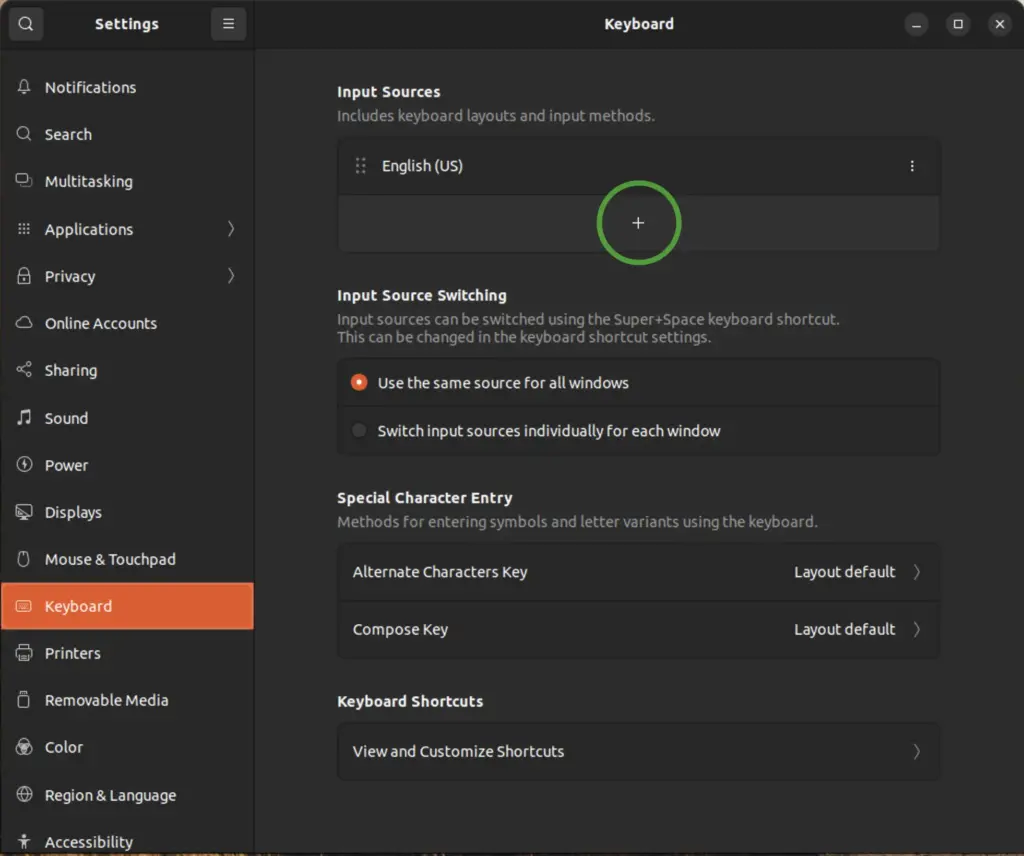
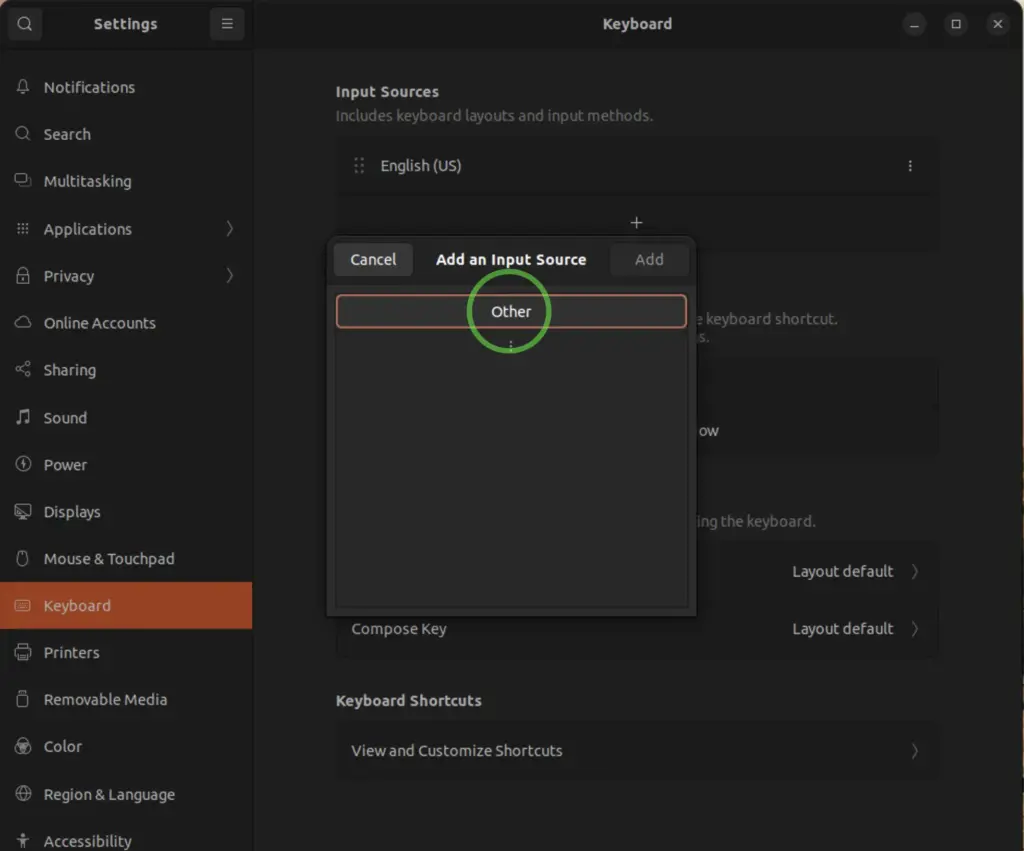
- Click on the Show Applications button and select the gear icon to open Settings.
- Select Keyboard (near the middle of the list on the left-hand side).
- Under Input Sources, click on the + symbol.
- Click on Other and then the system should generate a long list of languages and their various keyboards.
- Scroll down to find the Hindi keyboards (it's alphabetical). Highlight one of the three options, such as Hindi (KaGaPa, phonetic) and then click Add.
- You should see that Hindi (KaGaPa, phonetic) is added to your list of Input Sources.
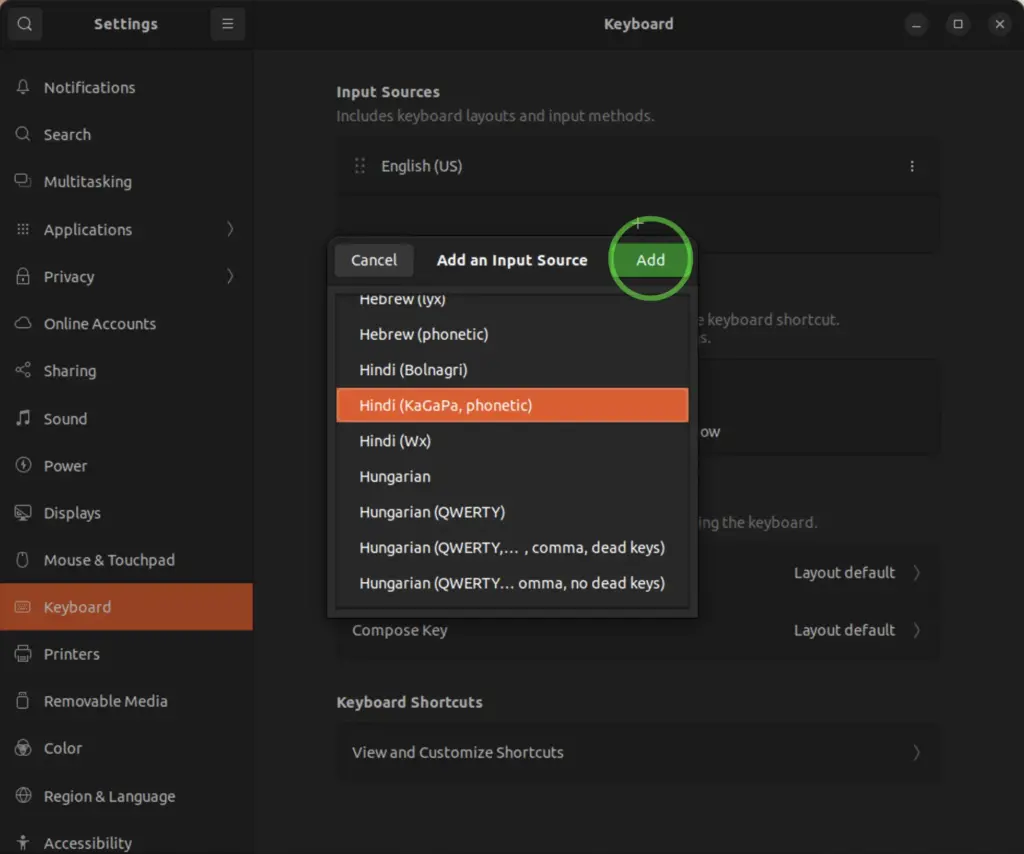
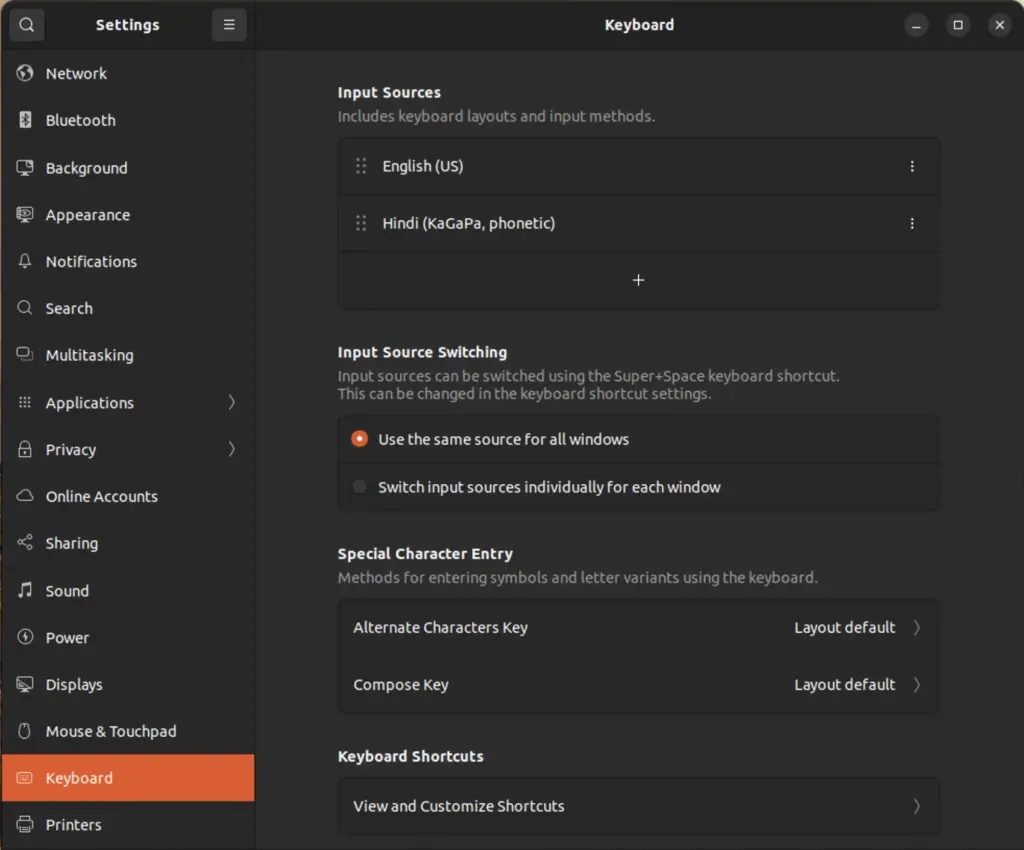
#2 - Switching Languages
After adding Hindi in Settings, you'll have a few different ways of switching between languages.
Using the System Tray
Look for the language button on the right side of your system tray (usually at the top right-hand corner of your screen). It should display the current input language, such as en for English and hi for Hindi. Click on it and select Hindi (KaGaPa, phonetic) from the menu.
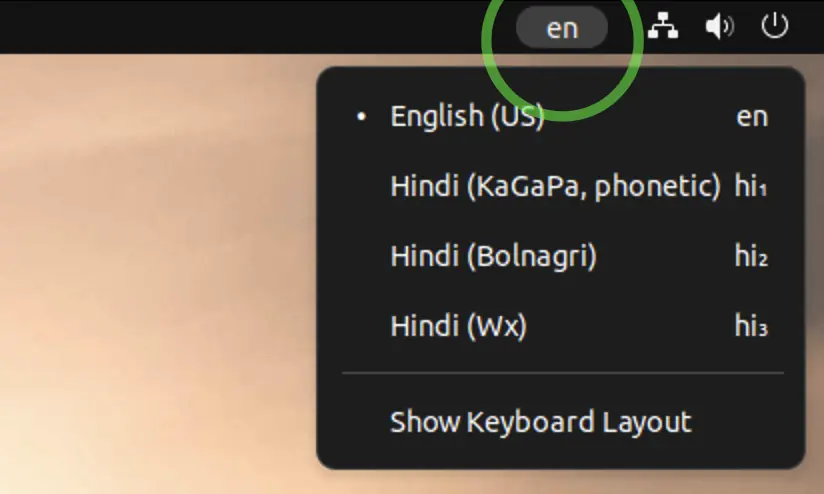
Using a Keyboard Shortcut
You can also switch languages quickly using the keyboard shortcut Super Key + Space. This will allow you to quickly cycle through the installed keyboards.
If you want to change that shortcut, you can find it and modify by doing the following:
- Go to Settings.
- Select Keyboard.
- At the bottom, there's a section called Keyboard Shortcuts. In that section, click on View and Customize Shortcuts.
- From the list of Keyboard Shortcuts, select Typing.
- Click on Switch to next input source and then enter whatever keyboard shortcut you prefer. If you wish, you can also change the shortcut for Switch to previous input source, which is especially helpful if you have three or more keyboards installed.
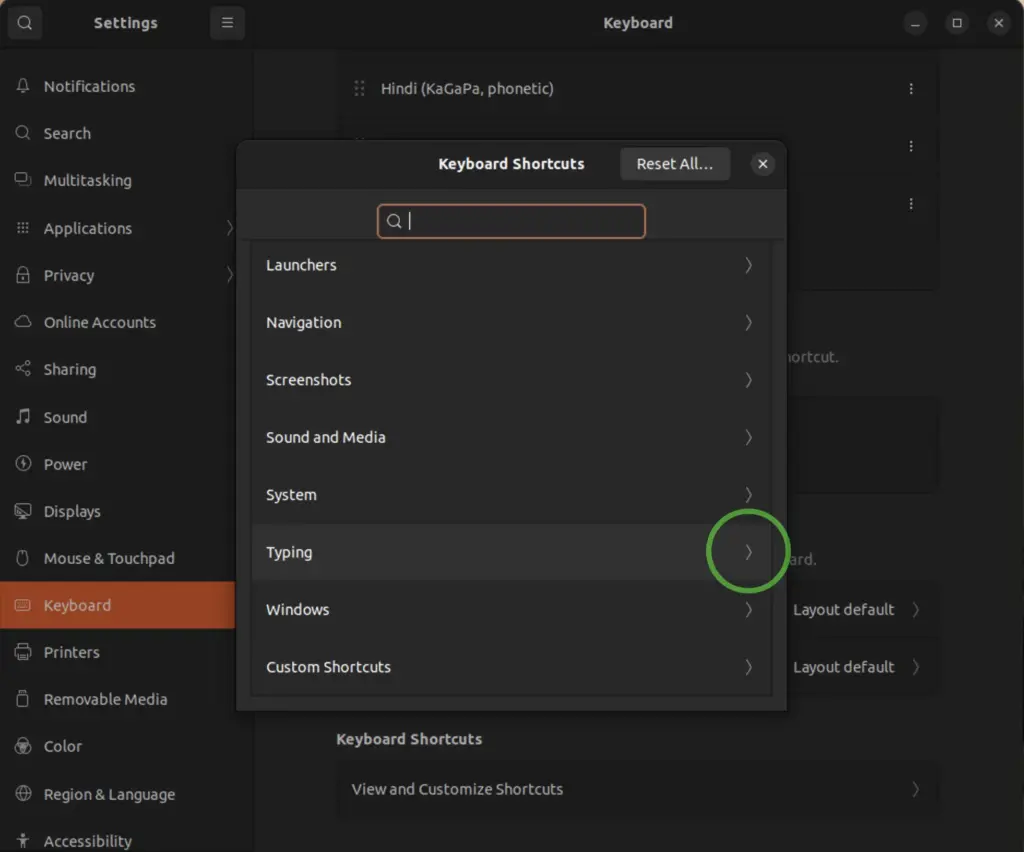
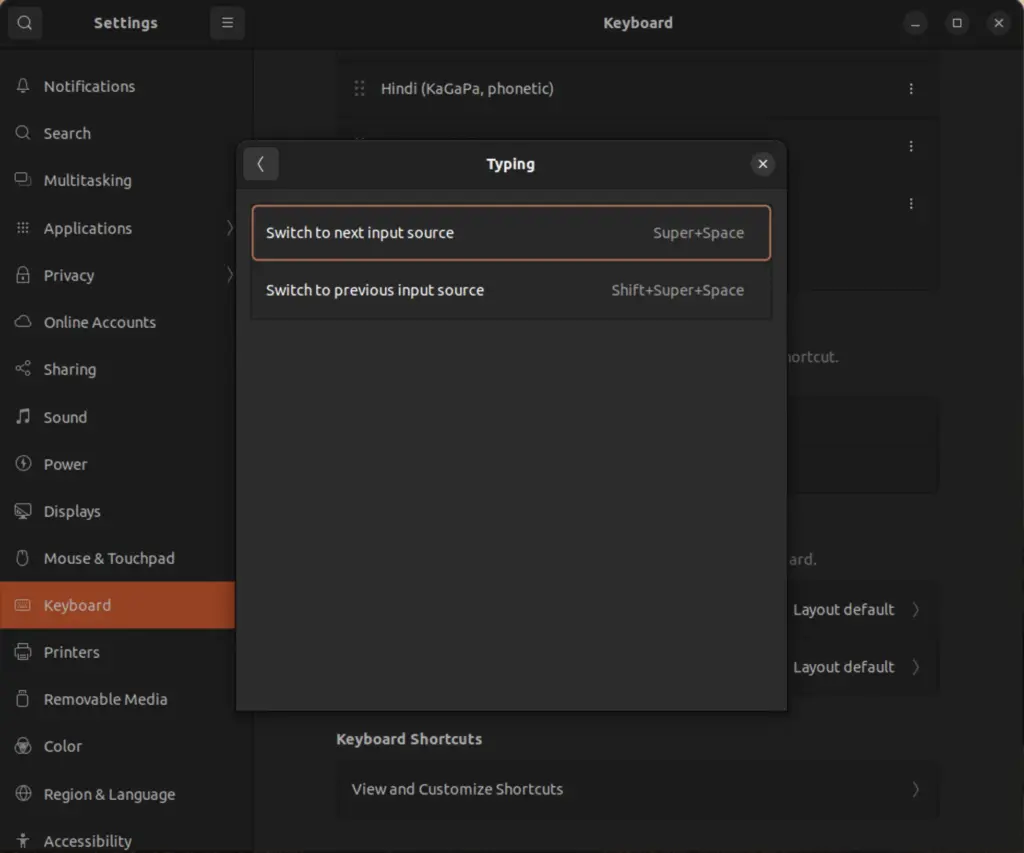
#3 - Hindi Keyboard Layouts
In the above instructions we added the keyboard Hindi (KaGaPa, phonetic), but that's not the only option. In the build of Ubuntu I'm currently using (22.04.02), it also gives me the option to add Hindi (Bolnagri) or Hindi (Wx) for a total of three Hindi keyboard options.
All three options are relatively phonetic and quite similar to the Hindi - QWERTY keyboard I use on Mac OS (which is my personal favorite). All three of them use the shift and the "super key" (i.e. the Windows key in Windows or the "option" key on a Mac) to cover all of the Devanagari characters.
The differences among the three seem to be in how to type the characters which don't easily correspond to English letters like ऋ or ष, and other retroflex consonants like ट, ठ, ड and ढ. There's also a difference in how they handle typing conjunct consonants. To stop the inherent अ, type the F key with Hindi (KaGaPa, phonetic), the C key with Hindi (Bolnagri), and the A key with Hindi (Wx).
Here are images of the keyboard layouts of all three options.
Hindi (KaGaPa, phonetic)
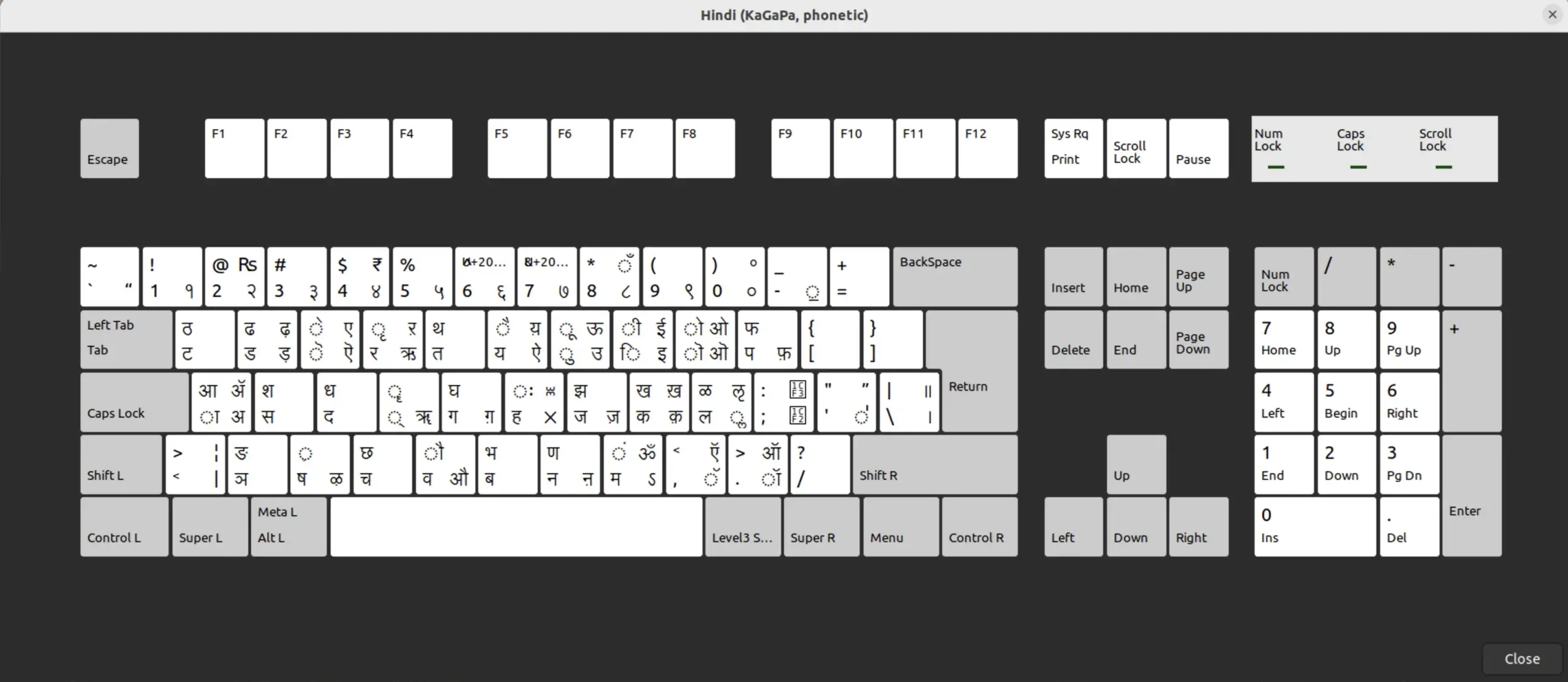
Hindi (Bolnagri)
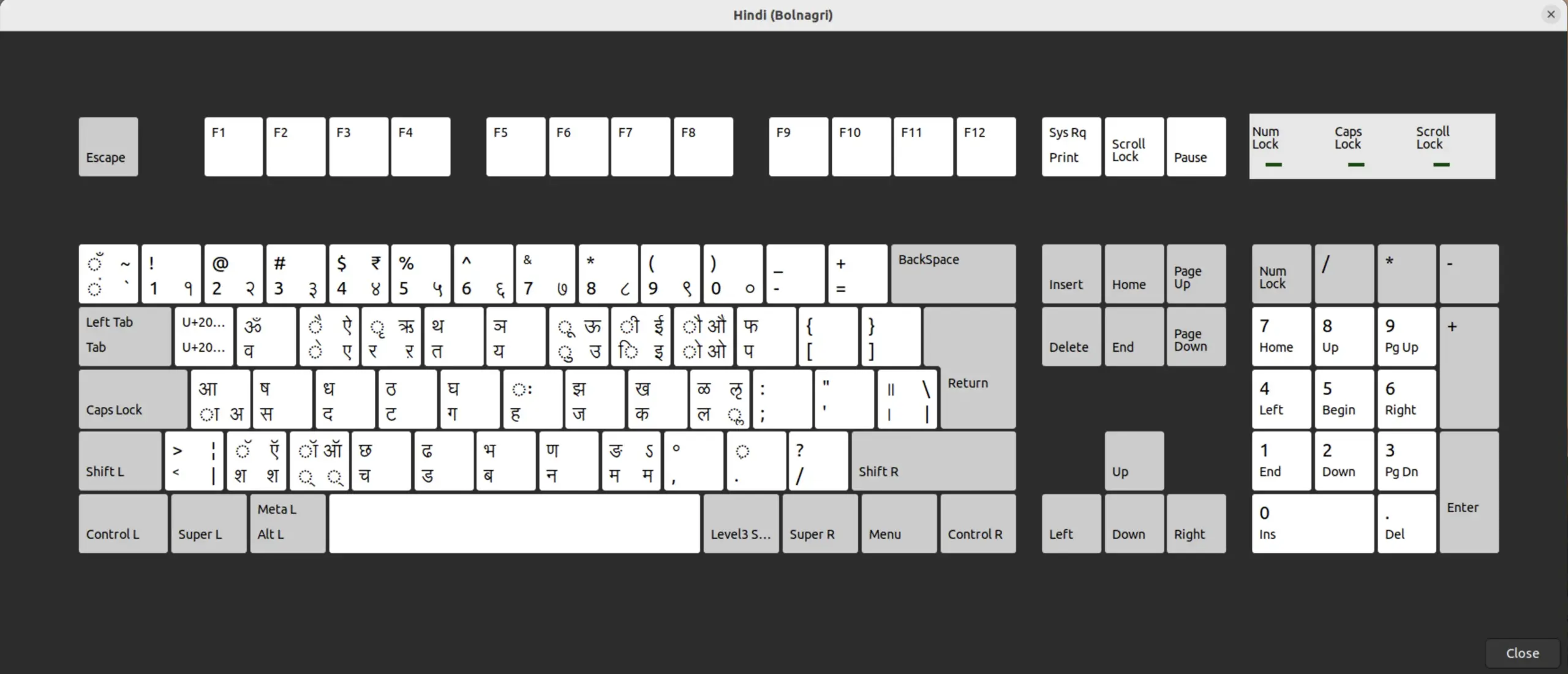
Hindi (Wx)
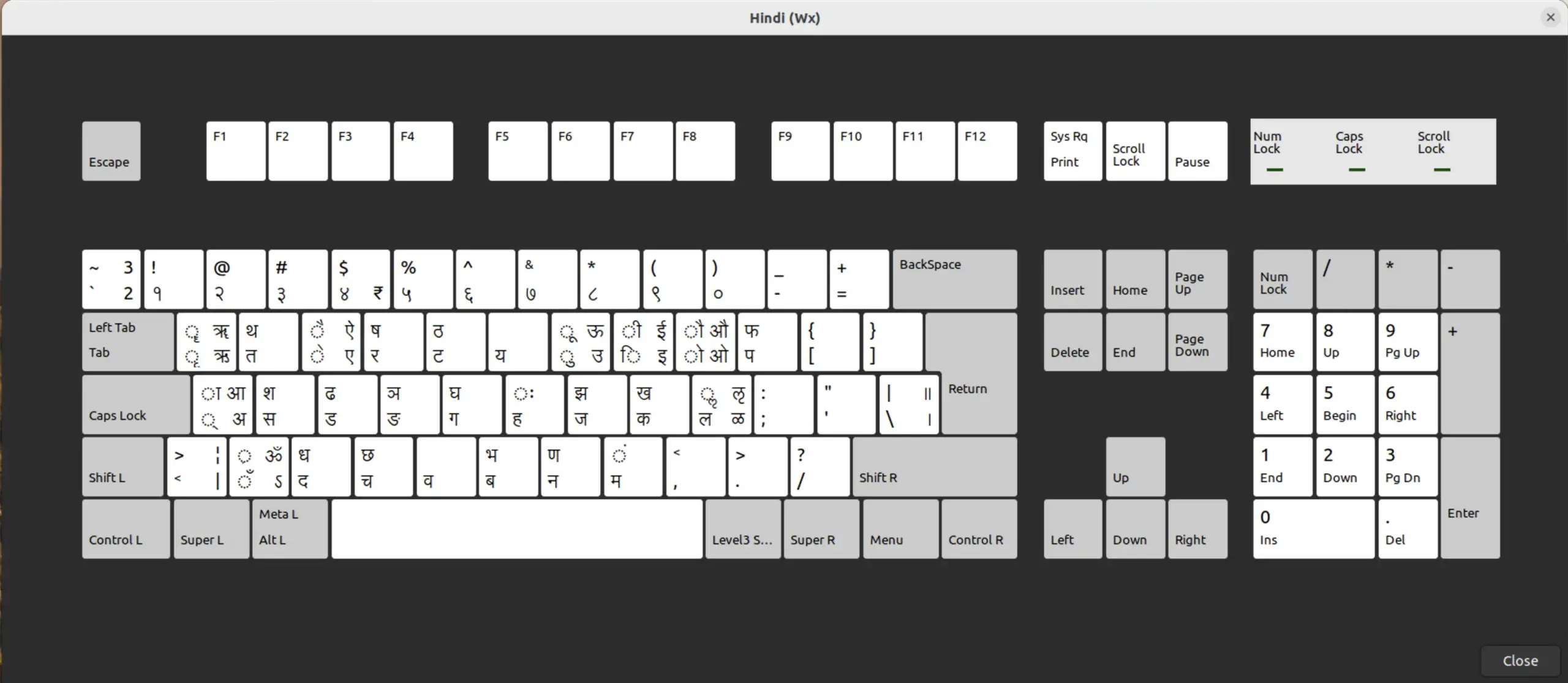
#4 - Typing in Hindi
Once you’ve switched to one of the Hindi keyboards, you can start typing in Devanāgarī. When you're first starting, you should refer to the Keyboard Layout image for whichever keyboard you're using. To access that image, do the following:
- Go back to Settings → Keyboard.
- Click on the drop-down menu next to the keyboard you're using.
- Select View Keyboard Layout.
- The image of the layout should appear.
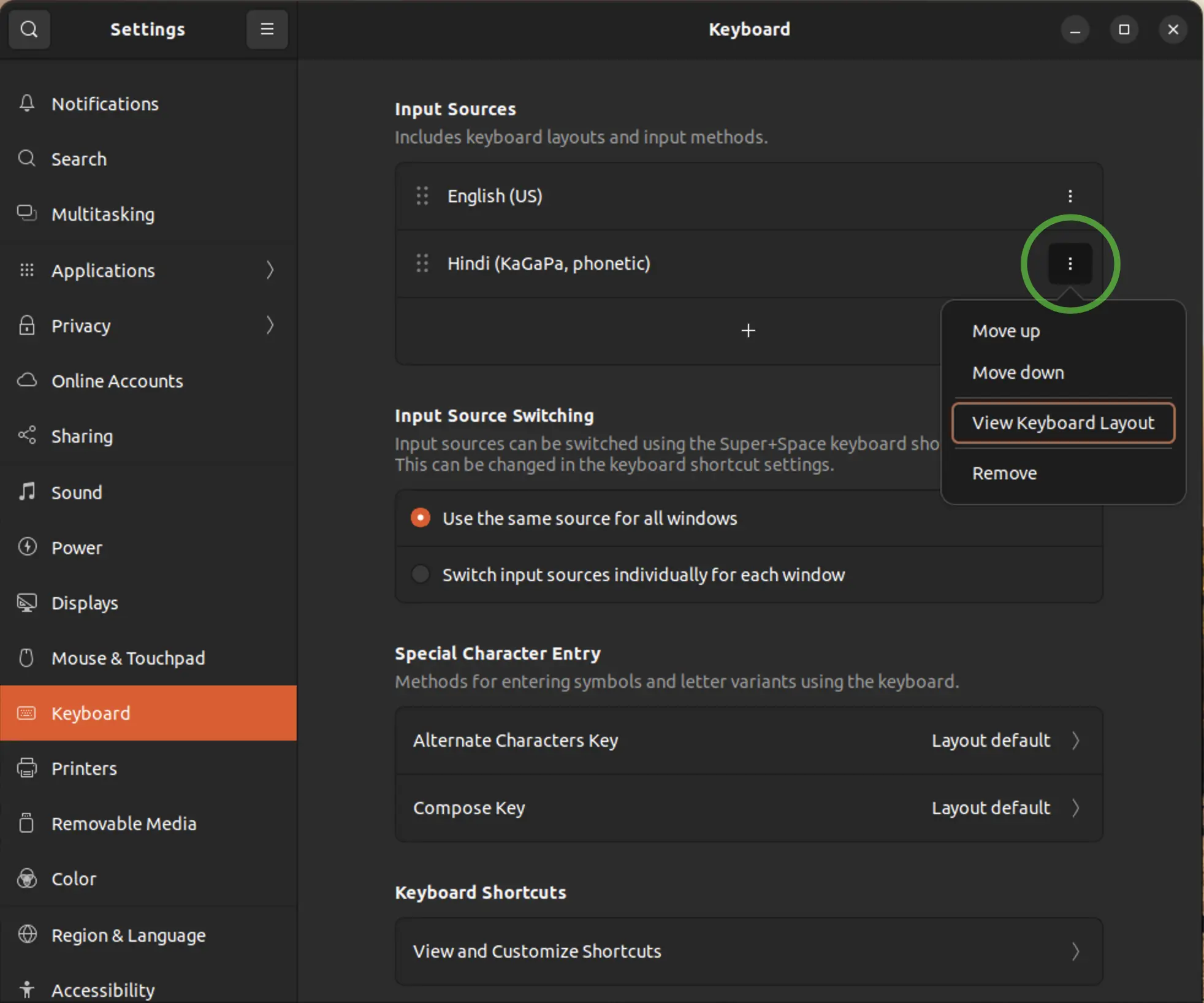
Unlike the in-built keyboard viewers in Mac OS and Windows 11, this is just an image. In other words, you can't click on the different keys—you can only use it as a reference while you're learning the layout.
Try typing in Hindi using one of the built-in word processors (like Text Editor or LibreOffice Writer). As you can see in the image below, it can be helpful to have the keyboard layout image right above (or below) the word processor.
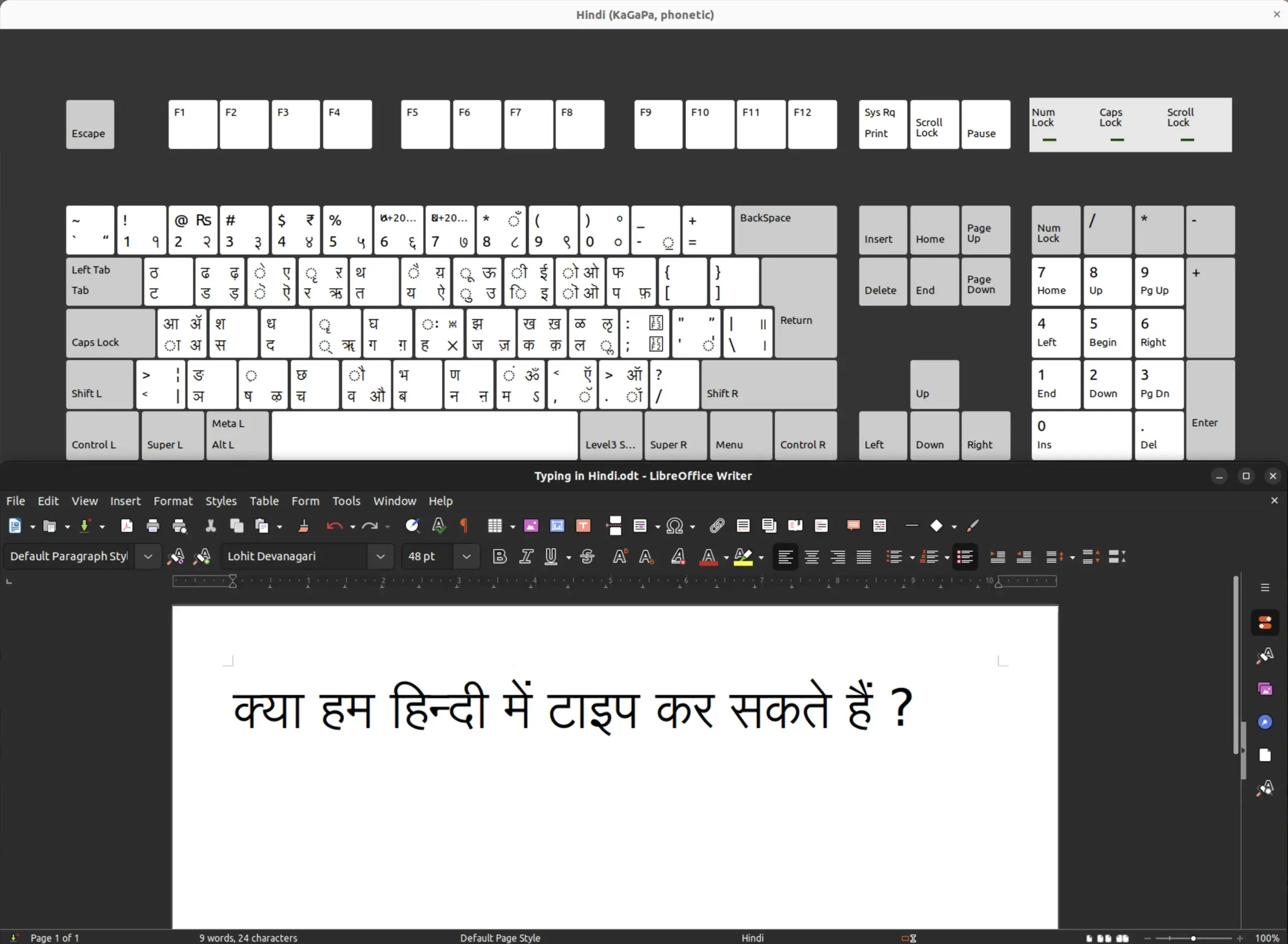
Where Can You Type in Hindi?
You can type in Hindi anywhere within Linux - Ubuntu as long as the application supports Unicode text input. This includes:
• Text Editors: Text Editor, LibreOffice Writer, etc.
• Web Browsers: FireFox, etc.
• Email Clients: Thunderbird Mail, etc.
Most modern applications support Unicode, so you should have no trouble typing in Hindi across various platforms and applications.
By following these steps, you’ll be able to type in Hindi on your Linux - Ubuntu computer.
Hindi Fonts
Want to try Hindi fonts other than the system defaults? Head over to my Hindi Fonts page and explore a wide range of fonts available for free download.




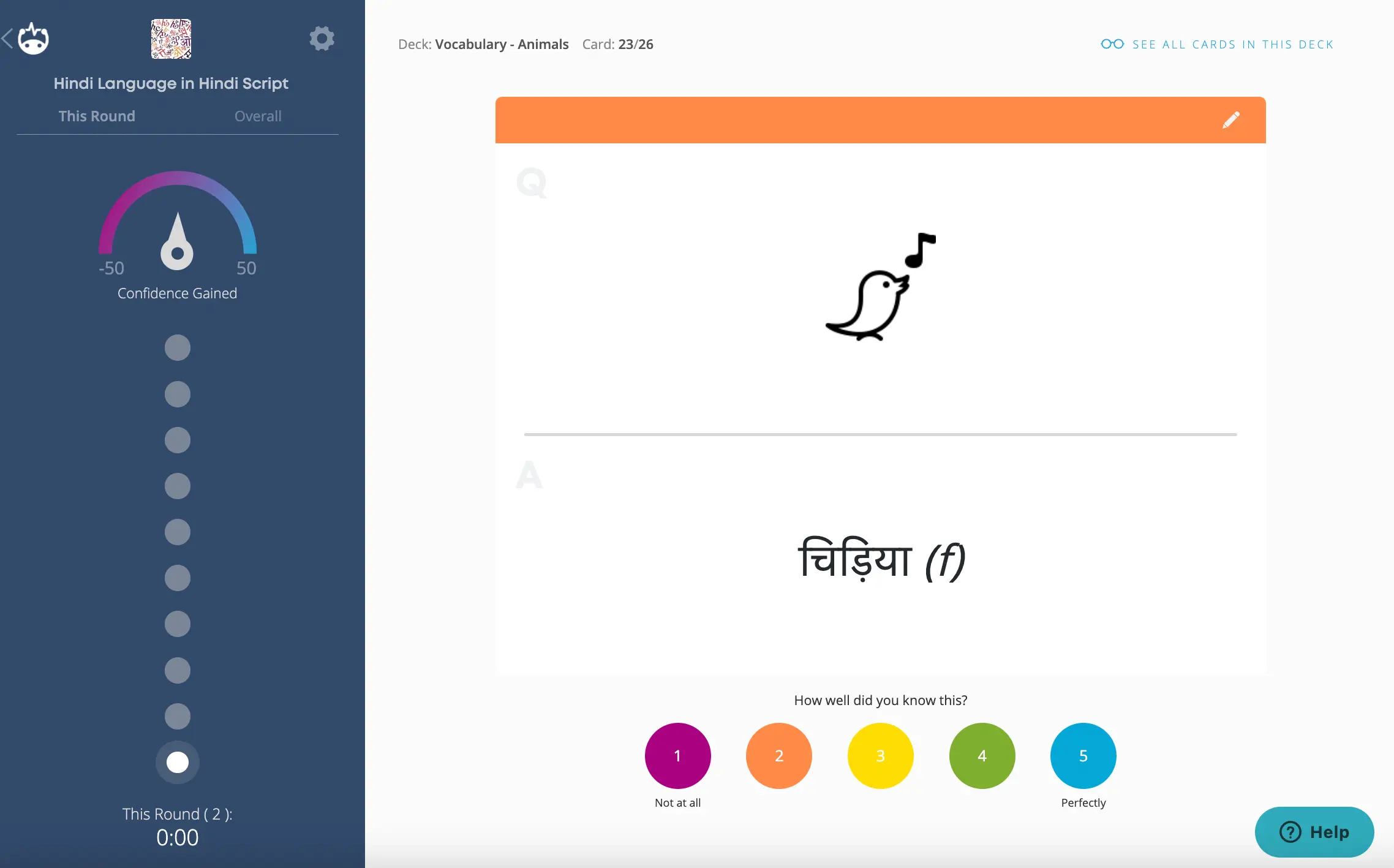
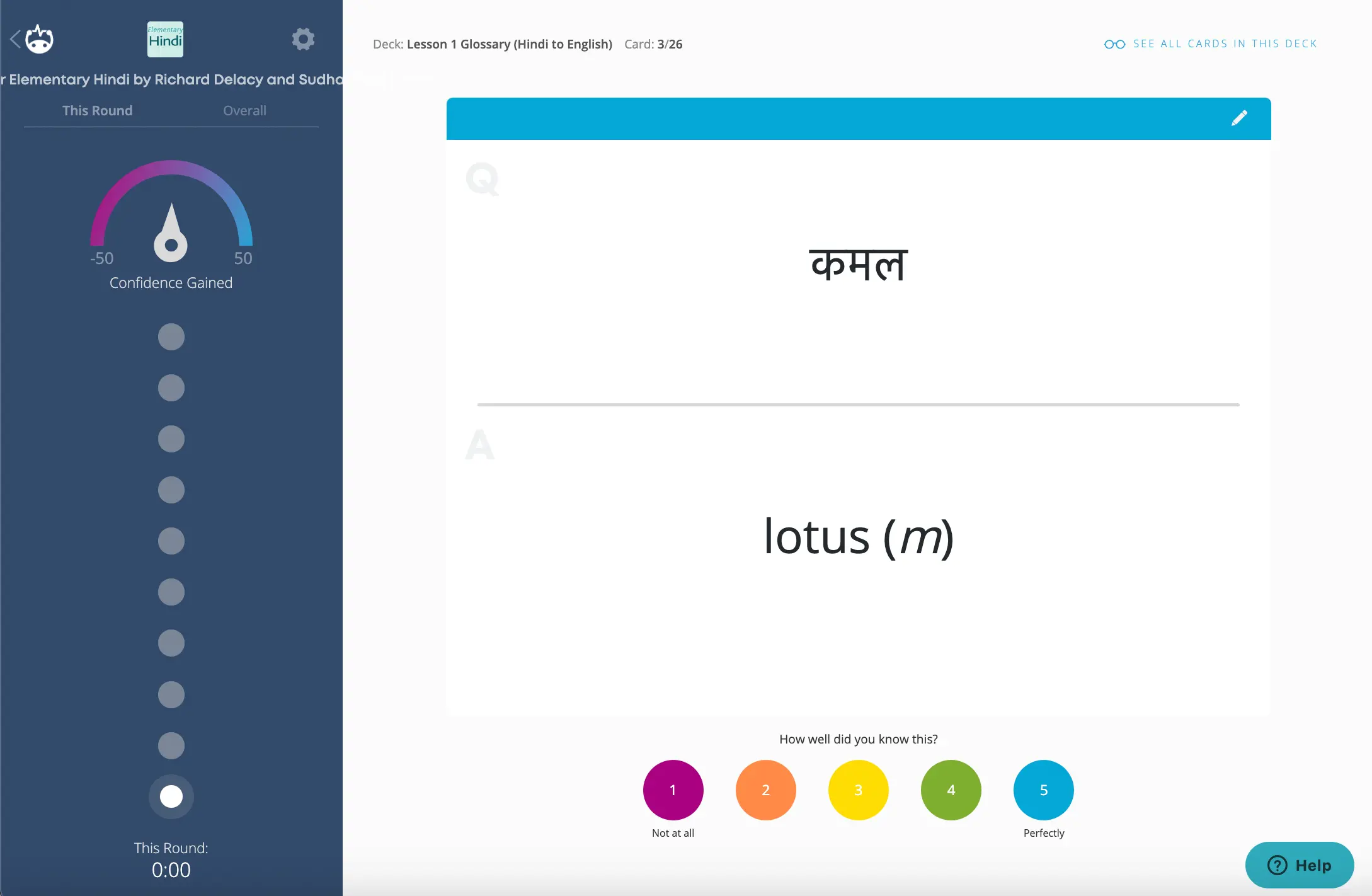

Comments 2
I searched the web a lot to get the images of keyboard layouts for the Indian languages such as Telugu, Hind and Kannada, only to find that they are they are available in Ubuntu settings! Thank you for sharing the article.
Author
I’m glad you found it helpful. 👍